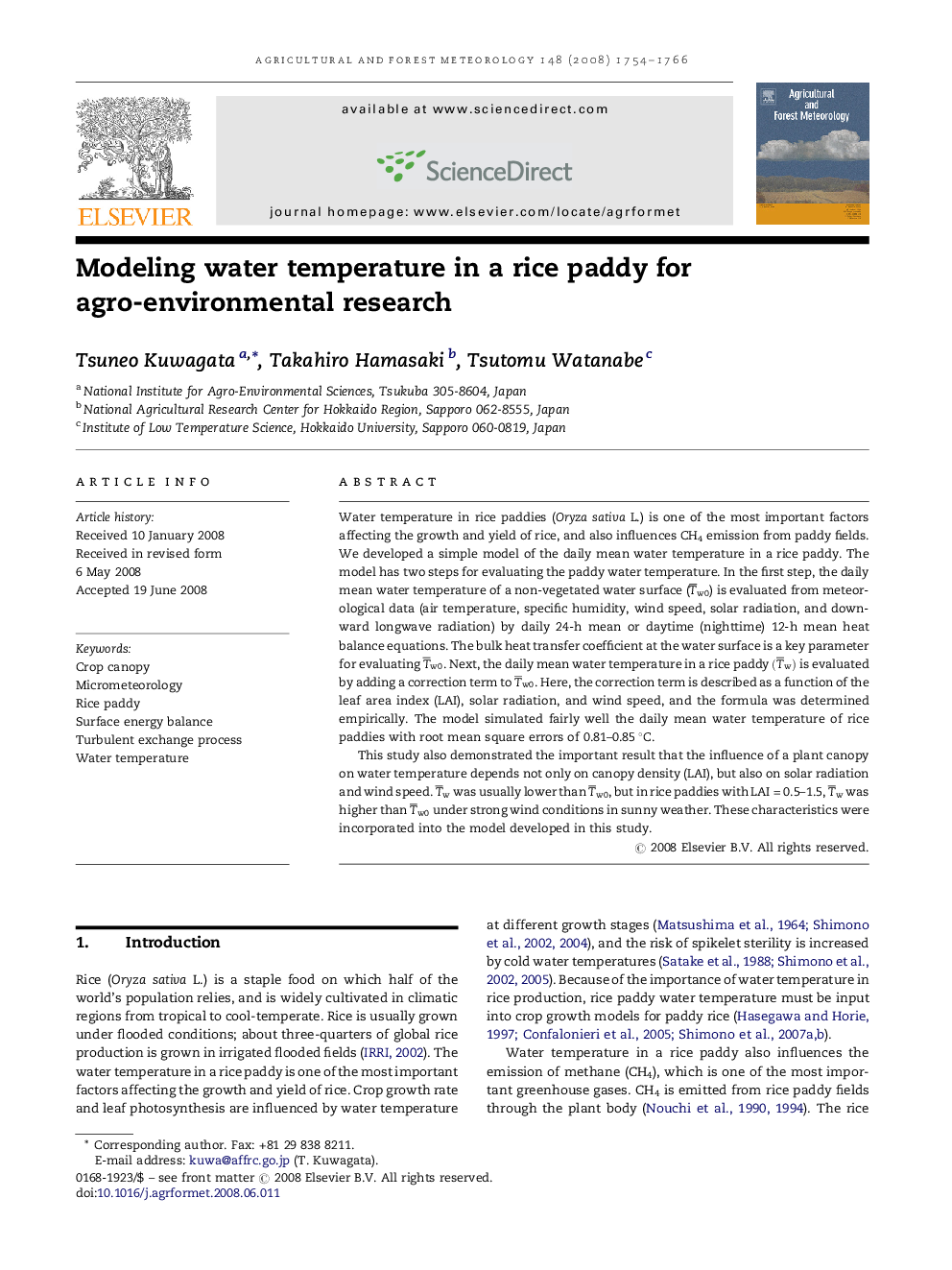| Article ID | Journal | Published Year | Pages | File Type |
|---|---|---|---|---|
| 82411 | Agricultural and Forest Meteorology | 2008 | 13 Pages |
Water temperature in rice paddies (Oryza sativa L.) is one of the most important factors affecting the growth and yield of rice, and also influences CH4 emission from paddy fields. We developed a simple model of the daily mean water temperature in a rice paddy. The model has two steps for evaluating the paddy water temperature. In the first step, the daily mean water temperature of a non-vegetated water surface (T¯w0) is evaluated from meteorological data (air temperature, specific humidity, wind speed, solar radiation, and downward longwave radiation) by daily 24-h mean or daytime (nighttime) 12-h mean heat balance equations. The bulk heat transfer coefficient at the water surface is a key parameter for evaluating T¯w0. Next, the daily mean water temperature in a rice paddy (T¯w) is evaluated by adding a correction term to T¯w0. Here, the correction term is described as a function of the leaf area index (LAI), solar radiation, and wind speed, and the formula was determined empirically. The model simulated fairly well the daily mean water temperature of rice paddies with root mean square errors of 0.81–0.85 °C.This study also demonstrated the important result that the influence of a plant canopy on water temperature depends not only on canopy density (LAI), but also on solar radiation and wind speed. T¯w was usually lower than T¯w0, but in rice paddies with LAI = 0.5–1.5, T¯w was higher than T¯w0 under strong wind conditions in sunny weather. These characteristics were incorporated into the model developed in this study.
